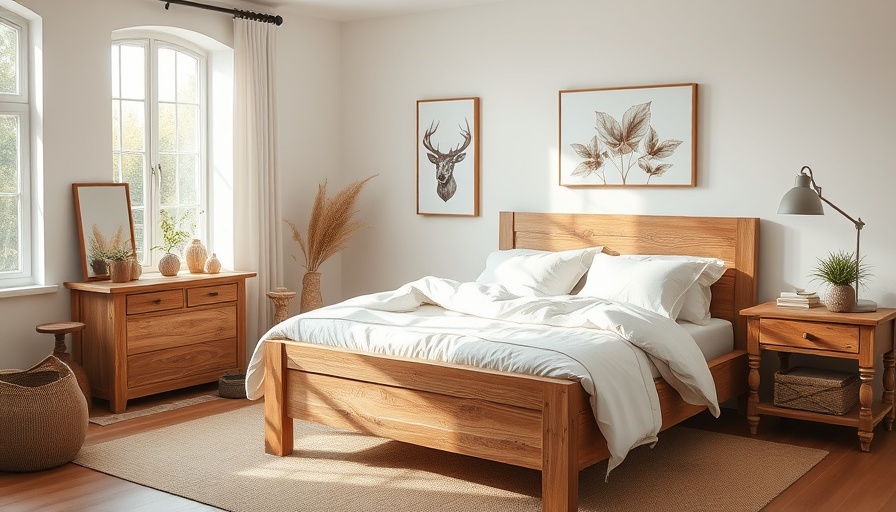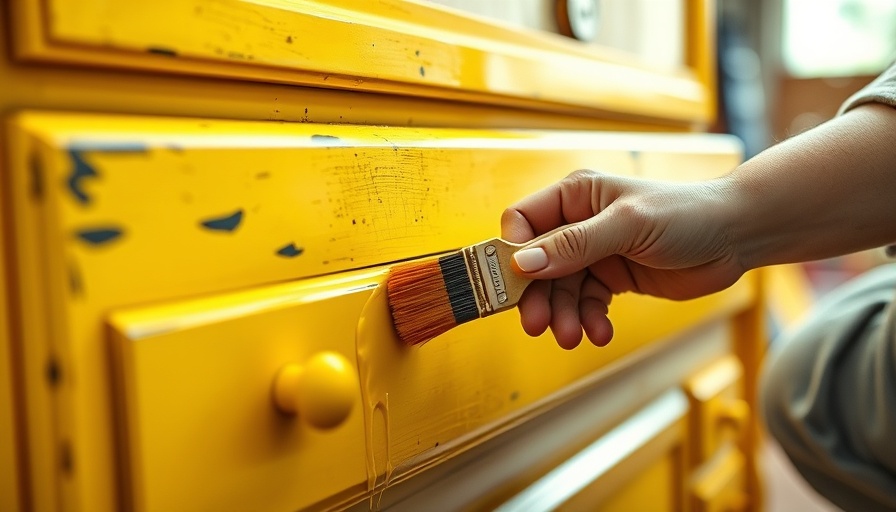
Maximizing Space: How to Stage Small Areas Effectively
Staging small spaces might seem like a daunting task, but with the right tips and techniques, homeowners can elevate their properties’ appeal tremendously. Whether you want to sell your home quickly or simply wish to create a more inviting atmosphere, effective staging can help you maximize your space. For homeowners aged 40-65, who often balance practicality with aesthetics, these strategies can transform your little corner into a big draw.
Understanding the Importance of Staging
Staging is not merely about decoration; it’s about creating an atmosphere that encourages potential buyers or guests to envision their lives in the space. Well-staged small areas feel larger, more functional, and inviting. The National Association of Realtors reports that homes that are staged can sell up to 73% faster than those that aren’t. This is especially pertinent for homeowners looking to attract buyers by showcasing their space's potential.
2 Key Strategies to Stage Small Spaces
Homeowners can implement various strategies to make their small areas feel more spacious and inviting. Here are two key techniques:
1. Color and Light: A Powerful Duo
Using light colors on walls creates an illusion of larger space. Soft whites or pastel shades reflect more light and help to open up the room. Additionally, maximizing natural light is crucial. Keep window treatments light and airy to let sunshine in. Mirrors can also enhance the illusion of space by reflecting light and making small rooms feel larger.
2. Functional Furniture Choices
Selecting multifunctional furniture is a game-changer in small spaces. Consider pieces that can serve more than one purpose, like an ottoman that doubles as storage or a coffee table that expands into a dining area. This ensures that every inch of the room serves a purpose, enhancing both space and functionality.
Incorporating Personal Touches
Personalizing small spaces can set your home apart. Incorporating items that reflect your personality, such as artwork or family photos, can make a house feel like a home. Just be cautious not to overcrowd the space, which can make it feel cramped. Select a few standout pieces that resonate with your personal story or experiences.
Emotional Appeal: Creating Connection
Staging isn’t solely about optics; it’s also about emotional connection. Homebuyers often make decisions based on how they feel when they walk through your space. Use scents, such as candles or essential oils, to create a warm, welcoming environment. Other elements like ambient music during showings or inviting touches like a freshly baked pie can provide a sense of belonging and comfort, potentially swaying decisions in your favor.
Updating Small Spaces with Technology
As more homeowners embrace smart home technologies, integrating these features can significantly modernize small spaces. Devices such as smart thermostats or lighting systems allow you to control energy, ensuring the space is both efficient and comfortable. These improvements not only add a layer of convenience but also enhance the property’s marketability.
Future Trends in Small Space Design
The trend towards smaller living spaces is here to stay. Urbanization and a desire for sustainable living mean home designs will focus more on maximizing every inch. Incorporating vertical spaces and outdoor areas in small home designs will become essential. Keeping an eye on these trends can benefit homeowners looking to stage their homes for sale or enhance their living experience.
Conclusion: Your Next Steps to Success
Staging small spaces effectively requires creativity, functionality, and a bit of heart. Whether you’re preparing for a sale or looking to improve your living environment, remember these key strategies to make a big impact. For homeowners in the 40-65 age range, focusing on practical applications while keeping it aesthetically pleasing can create a blend of comfort and style that appeals to both guests and buyers. Now is the time to take these insights and transform your space, making it not only market-ready but also a more beautiful place to live.
Ready to get started on staging your small spaces? Taking the time to implement these tips can enhance your home’s appeal and market value significantly.
 Add Row
Add Row  Add
Add 




Write A Comment